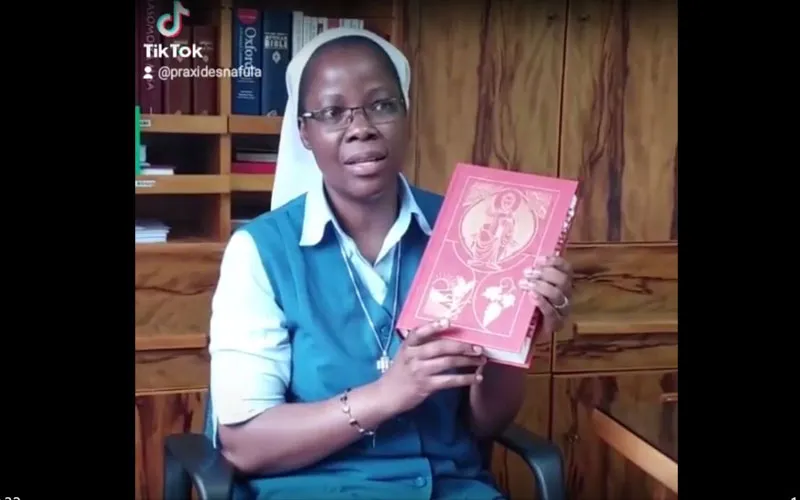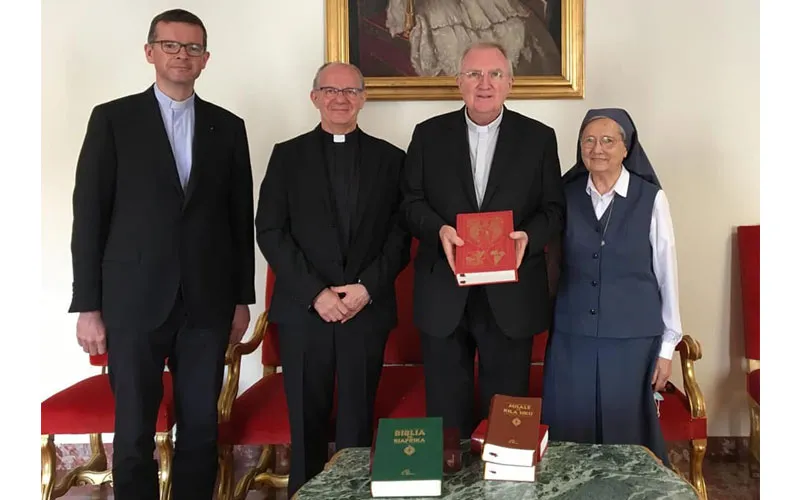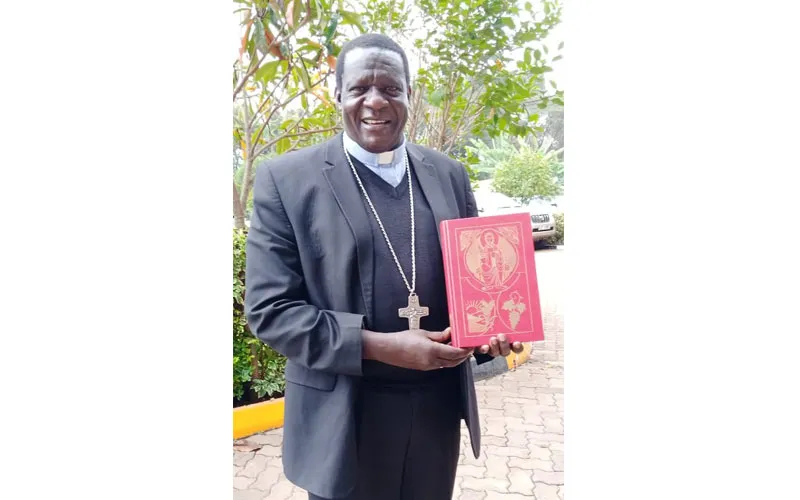They continue, “The end result of this joint venture is, certainly, praiseworthy, and we would like to express our gratitude and appreciation to all those who have worked with competence and dedication to offer our Christian communities a fresh translation of the Misale ya Kiroma and enable them to celebrate the Eucharist with renewed faith, joy and greater participation.”
They say that the long-awaited publication of the new Misale ya Kiroma is a true moment of grace for the Catholic Church in Kenya, as it will lead members of the Clergy and the Catholic faithful alike to a full, conscious and active participation in the Eucharist.
According to the Catholic Bishops in Kenya, the celebration of the Eucharist with the new Missal will be carried out not only through a more prayerful and devout celebration of the Mass, but also through homilies and catechesis on the meaning of Holy Mass and its centrality in our Christian life.
In a letter from the leadership of the Congregation for Divine Worship and the Discipline of the Sacrament, which was addressed to Archbishop Anyolo and other Catholic Bishops in Kenya, the Vatican acknowledged the hard work that went into the translation of the Roman Missal into Swahili, reiterating Sr. Nafula’s observation that the process had been lengthy and challenging.
 Screenshot of the Directress of Paulines Publications Africa, Sr. Praxides Nafula. Credit: Paulines Publications Africa
Screenshot of the Directress of Paulines Publications Africa, Sr. Praxides Nafula. Credit: Paulines Publications Africa
(Story continues below)
“I am well aware that this has been a long process, beginning with your letter of 18 August 2016, and I once again thank Your Excellency and your brother Bishops for their forbearance in this matter. However, it is our view that the end result is one which will stand the test of time and which will be an example of how to go about the challenging task of translating the books of the Roman Rite into local languages,” the Vatican officials stated.
In the letter, the officials of the Congregation for Divine Worship and the Discipline of the Sacrament further lauded the collaboration between KCCB and TEC liturgical teams.
 From left Fr. Enda Murphy of the Congregation for Divine Worship, Fr. Rinaldo Ronzani, General Editor for Liturgical books for Paulines Publications Africa, Archbishop Arthur Roche, the Prefect for the Congregation for Divine Worship, Sr. Teresa Marcazzan of the Daughters of St. Paul, former Director of Paulines Publications Africa. Credit: Fr. Salvador Aguilera López.
From left Fr. Enda Murphy of the Congregation for Divine Worship, Fr. Rinaldo Ronzani, General Editor for Liturgical books for Paulines Publications Africa, Archbishop Arthur Roche, the Prefect for the Congregation for Divine Worship, Sr. Teresa Marcazzan of the Daughters of St. Paul, former Director of Paulines Publications Africa. Credit: Fr. Salvador Aguilera López.
“One particular aspect of this process which is noteworthy has been the collaboration between the Episcopal Conferences of Kenya and Tanzania,” the Vatican officials said, and added, “This has helped to ensure a uniform text, especially when it comes to the Order of Mass. This type of cooperation is to be praised and we would encourage it to continue as other liturgical books are translated.”
In the August 18 interview with ACI Africa, Sr. Nafula noted that in one of the criticisms the members of the Daughters of St. Paul who run the Paulines Publications of Africa had received concerning the Daily Missal, people had wanted the Rites of the Sacraments to be included, a request that the Nairobi-based Sister said was not possible.
“People have said that they wanted the Rites of the Sacrament of Confirmation and other sacraments included in this edition of the Roman Missal. This is not possible because the book would be too large,” the Directress of Paulines Publications said.
“Again, the document on the Rites of the Sacraments has not been fully approved. It is an ongoing process and once we are done, we shall have another book only for the Rites,” the official of the Catholic publishing firm said.
Sr. Nafula further expressed gratitude to organizations that contributed towards the Swahili translation of the liturgical books. Those she named include Pontifical and charity foundation, Aid to the Church in Need (ACN) International, the Diocese of Cologne in Germany, Missio Aachen, and Propaganda Fide.
The Kenyan-born Sister urged the people of God in Kenya and in Tanzania where the new liturgical books will also be used to embrace significance of the new translations in the books.
“It is not enough to just know the words and phrases that have been translated. It is important to also understand their significance, to know how they speak to your faith,” Sr. Nafula said, adding that members of her Congregation have already embarked on creating awareness on the use of the new liturgical books in Catholic Parishes across Kenya.
Meanwhile, Paulines Publications Africa is working on a number of other initiatives, including a document for youth Catechism, a project that has received a major boost from ACN, a revised Biblia ya Kiafrika (African Bible), and a Paulines Bible translated directly from Greek to English.
“What we have today is from the American Catholic Bishops, meaning that we don’t have the rights that we can offer to a third party. Once we translate our own Bible directly from Greek, we shall possess such rights,” the member of the Daughters of St. Paul told ACI Africa August 18.
Paulines Publications Africa is also working on a book that addresses cyberbullying and other challenges of the youth in the age of the Internet.
Agnes Aineah is a Kenyan journalist with a background in digital and newspaper reporting. She holds a Master of Arts in Digital Journalism from the Aga Khan University, Graduate School of Media and Communications and a Bachelor's Degree in Linguistics, Media and Communications from Kenya's Moi University. Agnes currently serves as a journalist for ACI Africa.
 Bishop Joseph Obanyi of Kenya's Kakamega Diocese holding the newly published Swahili Missal, Misale ya Kiroma (Roman Missal) during the display of the new Liturgical Books to the Permanent Council of the Kenya Conference of Catholic Bishops (KCCB) on 17 August 2021 at Donum Dei, Karen, Nairobi/ Credit: Sr. Olga Massango/Daughters of St. Paul
Bishop Joseph Obanyi of Kenya's Kakamega Diocese holding the newly published Swahili Missal, Misale ya Kiroma (Roman Missal) during the display of the new Liturgical Books to the Permanent Council of the Kenya Conference of Catholic Bishops (KCCB) on 17 August 2021 at Donum Dei, Karen, Nairobi/ Credit: Sr. Olga Massango/Daughters of St. Paul



 Newly published Liturgical books in Swahili language. Credit: Paulines Publication Africa
Newly published Liturgical books in Swahili language. Credit: Paulines Publication Africa
 Screenshot of the Directress of Paulines Publications Africa, Sr. Praxides Nafula. Credit: Paulines Publications Africa
Screenshot of the Directress of Paulines Publications Africa, Sr. Praxides Nafula. Credit: Paulines Publications Africa From left Fr. Enda Murphy of the Congregation for Divine Worship, Fr. Rinaldo Ronzani, General Editor for Liturgical books for Paulines Publications Africa, Archbishop Arthur Roche, the Prefect for the Congregation for Divine Worship, Sr. Teresa Marcazzan of the Daughters of St. Paul, former Director of Paulines Publications Africa. Credit: Fr. Salvador Aguilera López.
From left Fr. Enda Murphy of the Congregation for Divine Worship, Fr. Rinaldo Ronzani, General Editor for Liturgical books for Paulines Publications Africa, Archbishop Arthur Roche, the Prefect for the Congregation for Divine Worship, Sr. Teresa Marcazzan of the Daughters of St. Paul, former Director of Paulines Publications Africa. Credit: Fr. Salvador Aguilera López.


